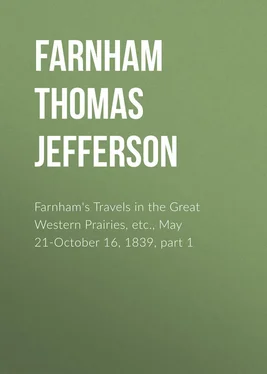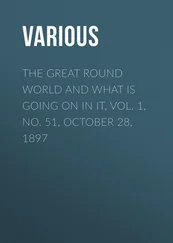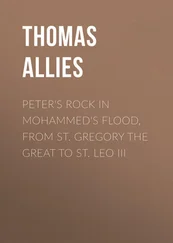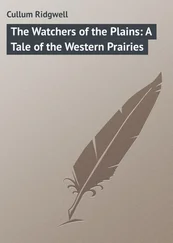Thomas Farnham - Farnham's Travels in the Great Western Prairies, etc., May 21-October 16, 1839, part 1
Здесь есть возможность читать онлайн «Thomas Farnham - Farnham's Travels in the Great Western Prairies, etc., May 21-October 16, 1839, part 1» — ознакомительный отрывок электронной книги совершенно бесплатно, а после прочтения отрывка купить полную версию. В некоторых случаях можно слушать аудио, скачать через торрент в формате fb2 и присутствует краткое содержание. Издательство: Иностранный паблик, Жанр: foreign_antique, foreign_prose, Путешествия и география, на английском языке. Описание произведения, (предисловие) а так же отзывы посетителей доступны на портале библиотеки ЛибКат.
- Название:Farnham's Travels in the Great Western Prairies, etc., May 21-October 16, 1839, part 1
- Автор:
- Издательство:Иностранный паблик
- Жанр:
- Год:неизвестен
- ISBN:нет данных
- Рейтинг книги:3 / 5. Голосов: 1
-
Избранное:Добавить в избранное
- Отзывы:
-
Ваша оценка:
- 60
- 1
- 2
- 3
- 4
- 5
Farnham's Travels in the Great Western Prairies, etc., May 21-October 16, 1839, part 1: краткое содержание, описание и аннотация
Предлагаем к чтению аннотацию, описание, краткое содержание или предисловие (зависит от того, что написал сам автор книги «Farnham's Travels in the Great Western Prairies, etc., May 21-October 16, 1839, part 1»). Если вы не нашли необходимую информацию о книге — напишите в комментариях, мы постараемся отыскать её.
Farnham's Travels in the Great Western Prairies, etc., May 21-October 16, 1839, part 1 — читать онлайн ознакомительный отрывок
Ниже представлен текст книги, разбитый по страницам. Система сохранения места последней прочитанной страницы, позволяет с удобством читать онлайн бесплатно книгу «Farnham's Travels in the Great Western Prairies, etc., May 21-October 16, 1839, part 1», без необходимости каждый раз заново искать на чём Вы остановились. Поставьте закладку, и сможете в любой момент перейти на страницу, на которой закончили чтение.
Интервал:
Закладка:
Floating in a tiny skiff down the upper Missouri, Fort Union was reached October 11; Fort Berthold was passed seven days later, and the end of the month found our tireless traveller the guest of Honoré Picotte at the American Company's Fort Pierre. Just below Council Bluffs he encountered Brigham Young and his settlement of ten thousand Mormons, whose persecutions and sufferings the good father declares, "will one day probably form a prominent part of the history of the Far West." Once more in St. Louis, the missionary terminates his volume with a sketch of a Potawatomi mission and a graphic account of the custom of human sacrifice among the Pawnee Loups.
The later career of Father de Smet falls without the field of our inquiry. Although in "labors abundant" until the end of his days, he never returned as missionary to the mountain tribes among whom his earlier days were so happily but strenuously spent. The superiors of his society found other work for him in the province of St. Louis, permitting him only an occasional visit of supervision to his "dear Indians" of the Far West. Thrice his aid was requested by the United States government to assist in pacification, and in important Indian negotiations. His influence and fame among the red men was so great that a sight of his black robe was sufficient to impel them to a peaceful humor. His services to Western settlement were thus incalculable.
In the volume of Oregon Missions , which we here republish, De Smet is seen in the fullness of his powers, physical and mental. With few words, but with graphic touches, he describes the regions through which he passes, and the Indian tribes and their customs – thus adding much to the material on far Western geography and ethnology which has already been included in our series.
In the preparation of both these volumes for the press, the Editor has had the assistance of Louise Phelps Kellogg, Ph.D., his editorial assistant on the staff of the Wisconsin Historical Library.
R. G. T.
Madison, Wis., June, 1906.
PREFACE BY THE FIRST EDITOR
This authentic account of the Great Western Prairies and Oregon Territory supplies a deficiency which has been felt for a long time. The author, by his own personal observations, has been enabled to furnish a very interesting narrative of travel; and whether he treats of the Prairies, or of the Oregon region, the various incidents related by him cannot fail to give entertainment and instruction.
With respect to the Introduction, in which the Author asserts the claims of the United States to the Oregon Territory little need be said here: the subject will no doubt receive the full consideration of the Governments interested in the decision of the question.
London, 1843.
PREFACE
It was customary in old times for all Authors to enter the world of letters on their knees, and with uncovered head, and a bow of charming meekness write themselves some brainless dolt's "most humble and obedient servant." In later days, the same feigned subserviency has shown itself in other forms. One desires that some will kindly pardon the weakness and imbecility of his production; for, although these faults may exist in his book, he wrote under "most adverse circumstances," as the crying of a hopeful child, the quarrels of his poultry, and other disasters of the season.
Another, clothed with the mantle of the sweetest self-complacency, looks out from his Preface, like a sun-dog on the morning sky, and merely shines out the query, "Am I not a Sun?" while he secures a retreat for his self-love, in case any body should suppose he ever indulged such a singular sentiment.
{viii} A few others of our literary shades make no pretensions to modesty. They hold out to the world no need of aid in laying the foundations of their fame; and, however adverse the opinions of the times may be to their claims to renown, they are sure of living hereafter, and only regret they should have lived a hundred years before the world was prepared to receive them.
There is another class, who, confident that they understand the subjects they treat of, if nothing else, and that, speaking plain truth for the information of plain men, they cannot fail to narrate matter of interest concerning scenes or incidents they have witnessed, and sensations they have experienced – trouble not themselves with the qualms of inability, or lack of polish, but speak from the heart. These write their names on their title-pages, and leave their readers at leisure to judge of their merits as they develop themselves in the work itself, without any special pleading or any deprecatory prayers to the reviews, by
THE AUTHORINTRODUCTION
The Oregon Territory forms the terminus of these Travels; and, as that country is an object of much interest on both sides of the Atlantic, I have thought proper to preface my wanderings there by a brief discussion of the question as to whom it belongs.
By treaties between the United States and Spain and Mexico and Russia, the southern boundary of Oregon is fixed on the 42nd parallel of north latitude; and the northern on an east and west line, at 54° 40´ north. 5 5 Our treaty with Spain, made in 1819, adjusted the boundary as far as the Pacific Ocean, between the latter's possessions in North America and those of the United States; see Gregg's Commerce of the Prairies , in our volume xix, p. 217, note 52. By this convention the United States considered itself the heir of all Spanish claims north of the international boundary line (42°). Our treaty with Mexico, in 1828, ratified the boundary as defined by the Spanish treaty of 1819. By our convention with Russia in 1824, the two countries agreed to make no settlements north or south, respectively, of the line 54° 40´. This by no means established the United States claim as far as the line specified. – Ed.
Its natural boundary on the east is the main ridge of the Rocky Mountains, situated about four hundred miles east of the Pacific Ocean, which washes it on the west. From these data the reader will observe that it is about six hundred miles in length, and four hundred in breadth.
According to the well-established laws of nations applicable to the premises, the title to the sovereignty over it depends upon the prior discovery and occupancy {x} of it, and upon cessions by treaty from the first discoverer and occupant. These several important matters I proceed to examine, with Greenough's History of the North-west Coast of America, and the works therein named, before me as sources of reference. 6 6 Robert Greenhow, born in Virginia in 1800, was educated at William and Mary College and later studied medicine in New York, afterwards spending some years in Europe. In 1828 he was appointed clerk in the department of state at Washington, where he soon rose to the position of official translator and librarian, an office retained until 1850, when he went to California with the United States Land Commission, dying in San Francisco in 1854. In 1837 he prepared, at the request of the Senate, a History of the Discovery of the North-west Coast , published in Senate Docs. , 26 Cong., 1 sess., 174. This was later expanded into a History of Oregon and California (Boston, 1845). His access to the records of the state department, and his knowledge of Spanish sources, make Greenhow's books authoritative in their field. – Ed.
From the year 1532 to 1540, the Spanish government sent four expeditions to explore the north-west coast of America, in search of what did not exist – a water communication from the Pacific to the Atlantic. These fleets were severally commanded by Mazuela, Grijalva, Becera, and Ulloa. They visited the coast of California, and the south-western shore of Oregon. 7 7 In his History of Oregon and California , Greenhow adds information to that given in his first volume, regarding these expeditions. His chief source of information was the work of Herrera, although he secured journals of some of the voyagers from W. H. Prescott. All of these expeditions were inspired by Hernando de Cortez. The first (1532) was headed by his kinsman Hurtado de Mendoza, whose lieutenant Juan de Mazuela brought back one vessel after his superior officer had been killed. In 1533, Hernando Grivalja and Diego Becerra were sent to search for the survivors. The former returned without touching mainland; Becerra was killed in a mutiny, and his pilot, Fortuño Ximenes, is supposed to have touched the southern end of the peninsula of Lower California. Farnham omits mention of Cortez's own expedition of 1535-36, when he also is supposed to have reached Lower California. In 1539-40, Francisco de Ulloa proved that this was not an island, and explored its coast to about 30° north latitude. – Ed.
Интервал:
Закладка:
Похожие книги на «Farnham's Travels in the Great Western Prairies, etc., May 21-October 16, 1839, part 1»
Представляем Вашему вниманию похожие книги на «Farnham's Travels in the Great Western Prairies, etc., May 21-October 16, 1839, part 1» списком для выбора. Мы отобрали схожую по названию и смыслу литературу в надежде предоставить читателям больше вариантов отыскать новые, интересные, ещё непрочитанные произведения.
Обсуждение, отзывы о книге «Farnham's Travels in the Great Western Prairies, etc., May 21-October 16, 1839, part 1» и просто собственные мнения читателей. Оставьте ваши комментарии, напишите, что Вы думаете о произведении, его смысле или главных героях. Укажите что конкретно понравилось, а что нет, и почему Вы так считаете.












